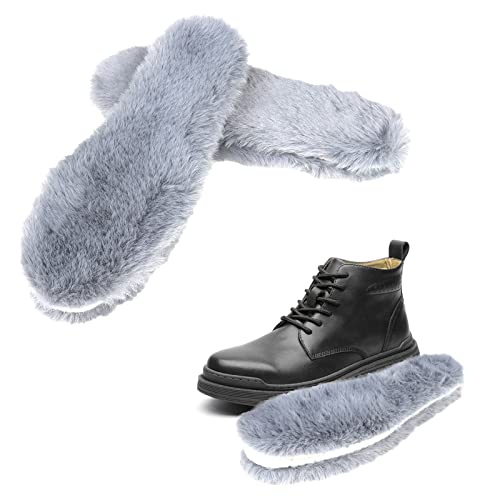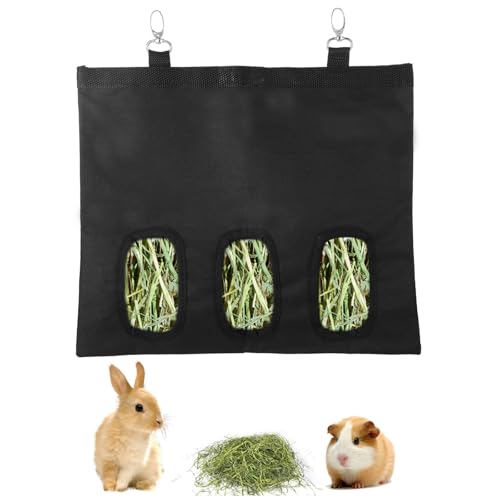- Joined
- Jan 20, 2010
- Messages
- 14,520
- Reaction score
- 37
Back in October, I started this thread: the-great-horse-feed-experiment-t10418.html
I started feeding our rabbits locally-produced, grain-based, 14% horse feed. It's been maybe a week shy of 6 months now since I started, and I wanted to give an update.
First off, I'll go ahead and spoil the ending: I am in the process of switching back to rabbit pellets. The 16% Rabbit Grower sold by the feed store.
It isn't a matter of catastrophic failure or anything, it's a combination of smaller things.
1: The rabbits have slowly gained weight. They aren't quite fat, but they're not as lean and mean as they used to be.
2: The feed itself is inconsistent. If every bag was like that first bag I bought, I might be able to continue. It's like I hit them on an "off" day for the feed, when it was low in molasses and in corn. Since then, it has been higher in corn, and higher in molasses, even though I have ordered it "extra light molasses". The corn content, like Maggie said, wasn't really an issue, because the rabbits left a lot of it and the chickens ate it.
3: Not sure if this is related to the feed, but I have had way more DOA kits and a recent miss. A doe will have a litter of 9, but only 5 are alive. I think one litter had this issue because some of them got pulled out after nursing, which wouldn't be the feed's fault. I did stop breeding for some 9 months or so, anticipating the move. I don't know how much of this problem is related to the long breeding stoppage, and how much is related to the feed. I attribute the first dead litter and the first miss to the breeding stoppage... just don't know how much that affected the rabbits after that.
4: If I use bowls, the fines (corn particles and dried molasses) collect in them, and it is difficult for the rabbits to get to all of their food sometimes. If I use J-feeders, the molasses absorbs humidity, and the feed stops flowing freely. I can have a growout litter without food for most of a day, if we leave to run errands, because the molasses got sticky and gummed up the works.
5: I may not be saving as much as I think. A lot of the feed is lost to the chickens. So I'm paying $10.50 probably more often, to feed the rabbits the amount they need. I gave up supplementing with alfalfa pellets. Most of the rabbits avoided them. So I ended up feeding only the 14% feed. I continued because some have kept rabbits on 12% with no issues before, so I figured I'd see if it worked out. I guess it helps lower the cost of feeding the chickens, but that wasn't what I was working on.
My cost per pound of cleaned rabbit did drop to a little over $1 though... it was about $1.25 on pellets.
Still, I'm just not pleased enough with the condition of the rabbits. Often, they'll act hungry, even though there's food still in their feeders. All the dead kits. All the molasses dropping to the floor, possibly attracting ants. I'm just not loving it.
Hopefully, going back to pellets will help with the kit situation, as well as overall condition.
I started feeding our rabbits locally-produced, grain-based, 14% horse feed. It's been maybe a week shy of 6 months now since I started, and I wanted to give an update.
First off, I'll go ahead and spoil the ending: I am in the process of switching back to rabbit pellets. The 16% Rabbit Grower sold by the feed store.
It isn't a matter of catastrophic failure or anything, it's a combination of smaller things.
1: The rabbits have slowly gained weight. They aren't quite fat, but they're not as lean and mean as they used to be.
2: The feed itself is inconsistent. If every bag was like that first bag I bought, I might be able to continue. It's like I hit them on an "off" day for the feed, when it was low in molasses and in corn. Since then, it has been higher in corn, and higher in molasses, even though I have ordered it "extra light molasses". The corn content, like Maggie said, wasn't really an issue, because the rabbits left a lot of it and the chickens ate it.
3: Not sure if this is related to the feed, but I have had way more DOA kits and a recent miss. A doe will have a litter of 9, but only 5 are alive. I think one litter had this issue because some of them got pulled out after nursing, which wouldn't be the feed's fault. I did stop breeding for some 9 months or so, anticipating the move. I don't know how much of this problem is related to the long breeding stoppage, and how much is related to the feed. I attribute the first dead litter and the first miss to the breeding stoppage... just don't know how much that affected the rabbits after that.
4: If I use bowls, the fines (corn particles and dried molasses) collect in them, and it is difficult for the rabbits to get to all of their food sometimes. If I use J-feeders, the molasses absorbs humidity, and the feed stops flowing freely. I can have a growout litter without food for most of a day, if we leave to run errands, because the molasses got sticky and gummed up the works.
5: I may not be saving as much as I think. A lot of the feed is lost to the chickens. So I'm paying $10.50 probably more often, to feed the rabbits the amount they need. I gave up supplementing with alfalfa pellets. Most of the rabbits avoided them. So I ended up feeding only the 14% feed. I continued because some have kept rabbits on 12% with no issues before, so I figured I'd see if it worked out. I guess it helps lower the cost of feeding the chickens, but that wasn't what I was working on.
My cost per pound of cleaned rabbit did drop to a little over $1 though... it was about $1.25 on pellets.
Still, I'm just not pleased enough with the condition of the rabbits. Often, they'll act hungry, even though there's food still in their feeders. All the dead kits. All the molasses dropping to the floor, possibly attracting ants. I'm just not loving it.
Hopefully, going back to pellets will help with the kit situation, as well as overall condition.































